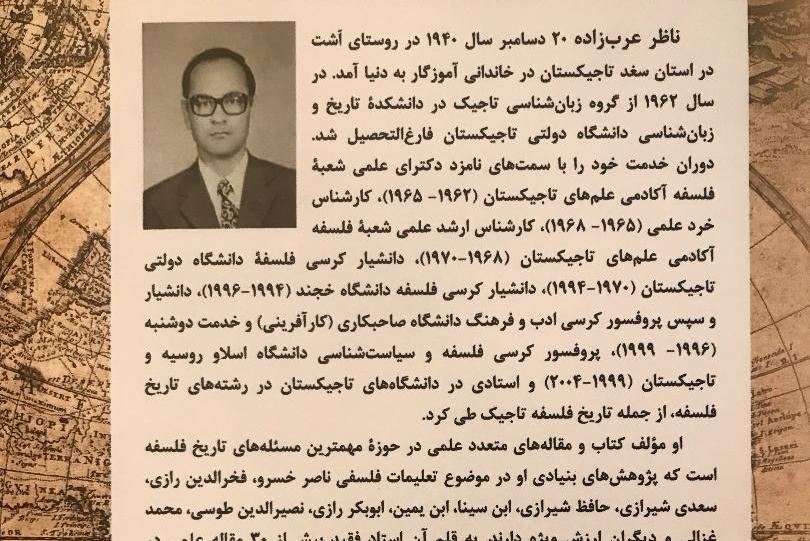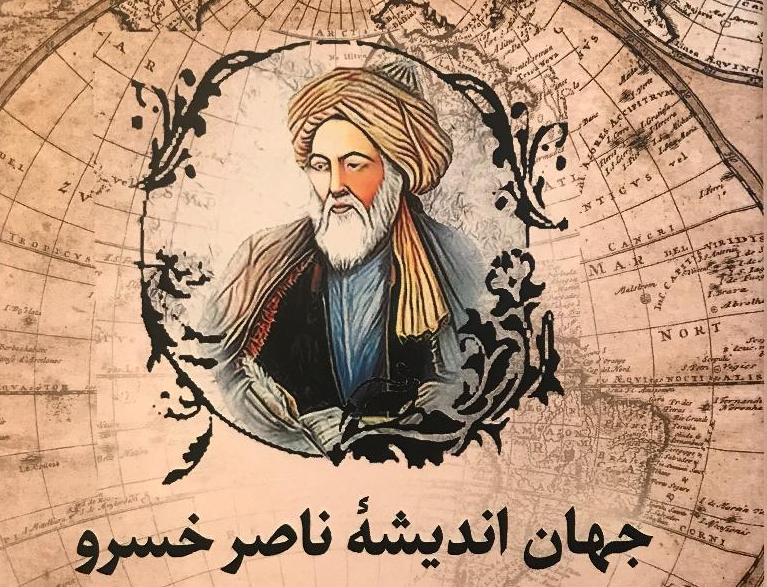Iranian publishing house “Arvan” has published a monograph by known Tajik researcher Nozir Arabzoda (1940-2004) about Persian poet, philosopher, Ismaili scholar, traveler and one of the greatest writers in Persian literature, Nasir Khusraw (1004-1088).
Consisting of five chapters, the monograph entitled Jahan-e Andishe-ye Nasir Khusraw (The World of Thinking of Nasir Khusraw) tells life and works of Nasir Khusraw.
It is already the third edition of this monograph. For the first time the monograph was published in Dushanbe in 1994 on the occasion of the 990th anniversary of the birth of Nasir Khusraw. The second edition of the monograph was published in 2003. The same year, the Russian translation of monograph was published.

Abu Mo’in Hamid ad-Din Nasir ibn Khusraw al-Qubadiyani or Nasir Khusraw Qubadiyani Balkhi also spelled as Nasir Khusrow and Naser Khosrow (1004 – 1088 CE) was a Persian poet, philosopher, Ismaili scholar, traveler and one of the greatest writers in Persian literature. He was born in Qubadiyan, a village in Bactria in the ancient Greater Iranian province of Khorasan, now in modern Tajikistan and died in Yumgan, now Afghanistan’s Badakhshan Province.
He is considered one of the great poets and writers in Persian literature. The Safarnama (The Book of Travels), an account of his travels, is his most famous work and remains required reading in Iran even today.
Among his other works, most of the lyrical poems in his Diwan were composed in his retirement, and their chief topics are an enthusiastic praise of Ali, his descendants, and al-Mustansir in particular, along with passionate outcries against Khorasan and its rulers, who had driven him from his home.
Another work of Nasir Khusraw is the Persian philosophical work Gushayis va Rahayish which has been translated into English by F.M. Hunzai under the title: Knowledge and Liberation. The work discusses creation, questions related to the soul, epistemology, creation, and Ismaili Islamic doctrines. From a linguistic point of view, the work is an example of early philosophical writing in new Persian.
It is the same strain which runs, although in a somewhat lower key, through his two larger mathnavis, the Rawshana-i-nama (or Book of Enlightenment, also known as Shish Fasl), and the Sa'datnama (Book of Felicity).
Of all other works of the author, the Zaad al-Musafirin (or Travelling Provisions of Pilgrims) and the Vajh-i-Din (or The Face of Religion) are theoretical descriptions of his religious and philosophical principles.






